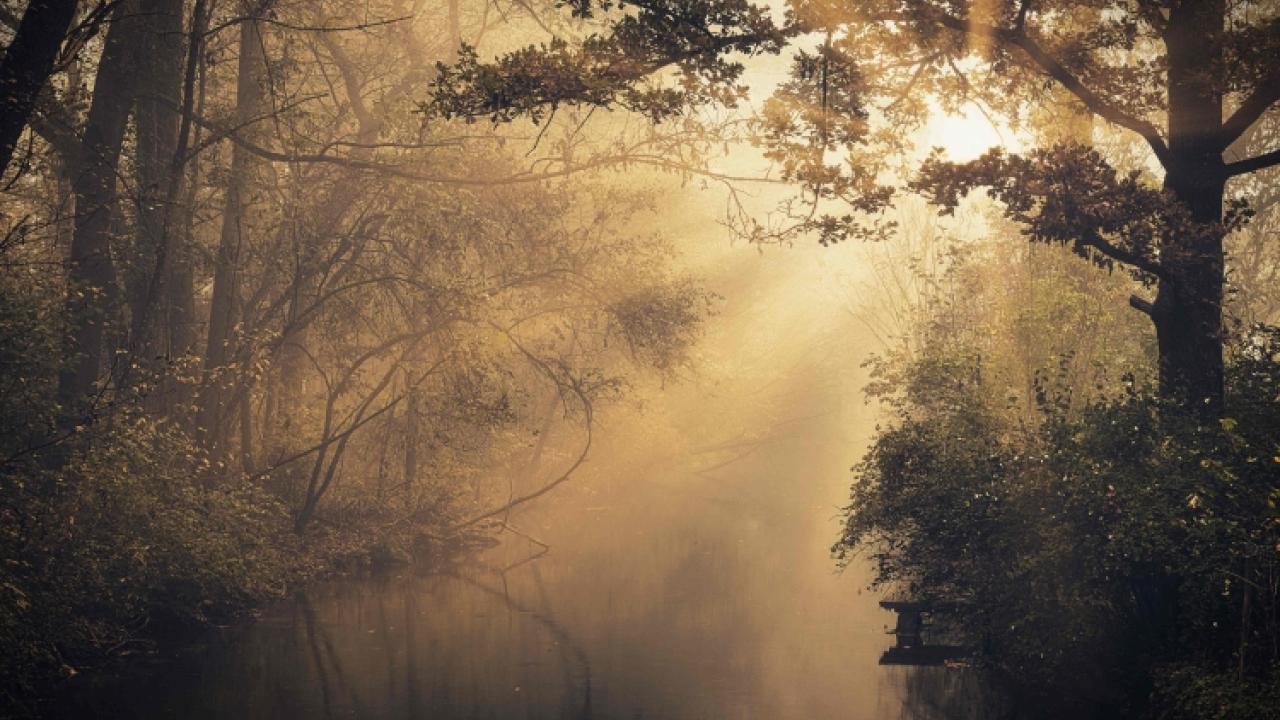But the light is here. It has come into this world we just need eyes to see. So look up and out.
“The light shines in the darkness, and the darkness has not overcome it” (John 1:5).
You ever wonder why when using the traditional Advent wreath of three purple candles and one pink, following the order of hope, faith, joy, and peace, that the pink candle representing joy isn’t the last one? Wouldn’t it make sense for the lightest colored candle and the most celebrative word to be on the last Sunday of Advent as we move from darkness toward light, the birth of Christ?
This week I’ve been thinking about light and darkness. Usually this time of year despite the fact that we are still in Advent I pay little attention to the darkness but focus instead on the beauty of the lights that appear around us. Liturgically we might be singing “Comfort, comfort, now my people; speak of peace: so says our God” but my mind is all “Joy to the World.” This year the lights are up but I’m less inclined to sing “Joy to the World.”
But what about the previous blog “cultivate joy,” you may rightly ask? How do we when following the Advent candle order go from joy back to peace; from “Joy to the World” back to “Comfort”? Maybe it isn’t about moving back to but rather a mutual existence? We need to hold both the celebration of joy and the prayer for peace, shalom, while we await Christ’s second coming. We need to bear witness to both the darkness and the light in this world.
Witness to the Darkness
At this moment I am all about the darkness. “Comfort those who sit in darkness, mourning under sorrow’s load,” wrote Johannes G. Olearius in 1667, a paraphrase of Isaiah 40:1–5. Olearius grew up during a time of political and religious war which saw the population decrease by 15–20% as a result of the fighting and concurrent epidemics. Olearius knew of peace and war, joy and grief. In any given year there are people who are grieving during this joy-filled season, but this year with COVID-19 there is no escaping death or the fear of death. It is a heavy blanket weighing down our hearts as we engage person after person who is mourning a loss of life, a loss of a job, a loss of a dream. As leaders we carry with us these sorrows as well as our own.
This year we need to practice Advent. Allow ourselves to “sit in darkness” and name it. To name the grief brought by death and the challenges of 2020 for our children and youth, virtual schooling, loss of relationships, loss of sports, the school play, the field trip, the graduation. To name the challenges for adults, remote work, loss of work, parenting in this unique time, the elderly and others who have been isolated. The situations and the list may seem endless but these sorrows must be named. We can’t hand over to the one who came, Immanuel, God with us, our sorrows and fears if we don’t know what they are, if they aren’t named. Our communities won’t know how to do this if it isn’t first modeled in our liturgy.
Witness to the Light
It is only when we acknowledge the darkness, let our eyes become adjusted, that we can see the light. Sometimes that light seems very dim. We are told that it will be months before enough people are vaccinated against COVID-19 to allow all of us to engage in person without fear of infection. Between now and then more people will get sick and die from COVID, traffic accidents, cancer… And the darkness isn’t just about COVID, is it? It’s about political and racial division, homelessness and refugees, inequality and injustice, isolation, mental health…
Indeed sometimes the light is dim.
But the light is here. It has come into this world we just need eyes to see. So look up and out. Where do you see that light? Where do you see God at work? Where is the good in this world? As much as our communities need us to name the darkness they need us to be witnesses to the light. To proclaim with great boldness and faith that darkness will never overcome light.
Additional Resources
In the northern hemisphere as we approach the longest night of the year churches will sometimes include a service for those who are grieving during what for others is a time of celebration and family gatherings. This year in particular many hearts are filled with griefs caused by a variety of losses. These services are also referred to as “Blue Christmas” services. If you are thinking about incorporating such a service in the next few weeks consider adapting one of the following.
- Blue Christmas: An Advent Candlelight Service for All Who Grieve
- Longest Night: A Service of Christmas Mourning
If you want to give more thought of the place of lament during Advent, consider reading the following articles.

